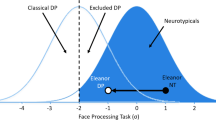Abstract
Juvenile neuronal ceroid lipofuscinosis (JNCL; CLN3 disease; Batten disease) is an autosomal recessive neurodegenerative disease of childhood that typically presents at school age with vision loss followed by progressive cognitive decline, motor dysfunction, seizures, and behavior problems. No therapy has been shown to slow the progression of disease in JNCL patients, and all current treatments are symptomatic. Flupirtine has been shown in vitro to reduce apoptosis in CLN3 lymphocytes. Based on that preclinical study, several children with JNCL were given flupirtine by their parents. The purpose of this study was to determine if there was evidence of attenuated disease progression in any JNCL symptom domain. We administered a survey to parents of JNCL children to qualitatively assess flupirtine efficacy. We used the Unified Batten Disease Rating Scale (UBDRS) to determine specific aspects of disease progression and investigated three age-related factors: loss of independent ambulation, loss of intelligible speech, and loss of ability to perform independent activities of daily living. The median scores for the UBDRS physical, behavior, and capability subscales were determined in flupirtine-exposed subjects and compared to age-, sex-, and genotype-matched subjects who had never taken flupirtine. Twenty-one percent of survey responders reported administering flupirtine to their JNCL child, and 56% of these families perceived beneficial changes that they attributed to flupirtine. However, our quantitative, prospectively obtained data did not show any change in JNCL disease progression that could be attributed to flupirtine. This study highlights the need for prospective experimental therapeutic research.



Similar content being viewed by others
References
Boustany R-M (1996). Batten disease or neuronal ceroid lipofuscinosis. In: Moser HW (ed) Handbook of clinical neurology, vol. 22. Elsevier, Amsterdam, pp 671–700
Dhar S, Bitting RL, Rylova SN et al (2002) Flupirtine blocks apoptosis in Batten patient lymphoblasts and in human postmitotic cln3- and cln2-deficient neurons. Ann Neurol 51:448–466
Jalanko A, Braulke T (2009) Neuronal ceroid lipofuscinoses. Biochim Biophys Acta 1793:697–709
Kim KH, Sleat DE, Bernard O, Lobel P (2009) Genetic modulation of apoptotic pathways fails to alter disease course in tripeptidyl-peptidase 1 deficient mice. Neurosci Lett 453:27–30
Kohlschutter A, Schulz A (2009) Towards understanding the neuronal ceroid lipofuscinoses. Brain Dev 31:499–502
Kovacs AD, Saje A, Wong A et al (2011) Temporary inhibition of ampa receptors induces a prolonged improvement of motor performance in a mouse model of juvenile Batten disease. Neuropharmacology 60:405–409
Marshall FJ, de Blieck EA, Mink JW et al (2005) A clinical rating scale for Batten disease: reliable and relevant for clinical trials. Neurology 65:275–279
Munroe PB, Mitchison HM, O'Rawe AM et al (1997) Spectrum of mutations in the Batten disease gene, cln3. Am J Hum Genet 61:310–316
Phillips SN, Benedict JW, Weimer JM, Pearce DA (2005) Cln3, the protein associated with Batten disease: structure, function and localization. J Neurosci Res 79:573–583
Rothberg PG, Ramirez-Montealegre D, Frazier SD, Pearce DA (2004) Homogeneous polymerase chain reaction nucleobase quenching assay to detect the 1-kbp deletion in cln3 that causes Batten disease. J Mol Diagn 6:260–263
Santavuori P, Lauronen L, Kirveskari E, Åberg L, Sainio K, Autti T (2000) Neuronal ceroid lipofuscinoses in childhood. Neurol Sci 21:S35–S41
Acknowledgments
The authors would like to thank Denia Ramirez-Montealegre, MD, PhD, MPH, Erika Wexler, MD, Tiffani McDonough, MD, and Leon Dure, MD for contributions to data collection and Will Wester for thoughtful discussions. We also thank the patients and families. This work was supported by NIH Grants R01NS060022, K12NS066098, K23NS058756, and TL1RR024136, by the Batten Disease Support and Research Association, the Strong Children's Research Center, and the Geoffrey Waasdorp Pediatric Neurology Fund.
Author information
Authors and Affiliations
Corresponding author
Additional information
Communicated by: Robert Steiner
Competing interests: None declared
Rights and permissions
About this article
Cite this article
Cialone, J., Augustine, E.F., Newhouse, N. et al. Parent-reported benefits of flupirtine in juvenile neuronal ceroid lipofuscinosis (Batten disease; CLN3) are not supported by quantitative data. J Inherit Metab Dis 34, 1075–1081 (2011). https://doi.org/10.1007/s10545-011-9346-0
Received:
Revised:
Accepted:
Published:
Issue Date:
DOI: https://doi.org/10.1007/s10545-011-9346-0



